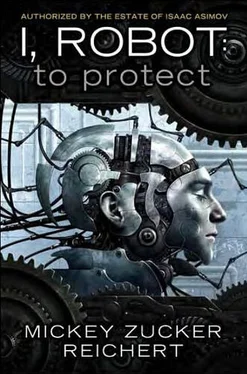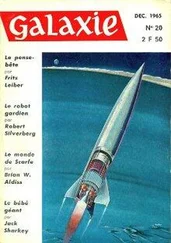Susan had read the chart and knew the story. The woman was Valerie Aldrich, the man her husband, John. She carried the diagnosis of non-Alzheimer’s dementia with fixed delusions. Three years ago, she had gotten the idea pinned into her mind that she was a princess, and nothing could dislodge it, including therapy and medications. She had surprisingly few other issues. She could still do crossword puzzles and basic mathematics, could answer historical questions, and knew loved ones and friends by name. All of her issues ballooned out from this one, rigid delusion. Her insistence on living it at all times, however, interfered intolerably with her activities of daily living.
Poor John Aldrich spent nearly every moment of his life catering to the delusion. It was his job to play the part of her butler, to indulge her desires, and to explain to everyone around them why she acted the way she did. He kept her home as much as possible, so as not to have to involve strangers and workers in the charade; but the difficulty of corralling someone who believed herself royalty had taken its toll.
Susan made a formal curtsy. “Good morning, Your Highness.”
Princess Valerie nodded her head ever so slightly to acknowledge the gesture. She wore a pretty smile. John breathed a sigh of happy relief.
Susan moved on to the husband, explaining the procedure as she had to the family of Payton Flowers. Unlike them, John Aldrich did not pause a moment before signing, though he did explain. “I love her, Dr. Calvin. We’ve been married fifty-four years, and she’s also been the sweetest woman in the world. This” — he made a subtle gesture to indicate insanity — “isn’t right; it isn’t her. I . . . just want my wife back.”
Valerie gave him a withering look. “John, we’re not here to talk about your marital problems. We’re here to treat the princess’ headaches.”
John gave Susan a look she understood. He had given his wife a story that would make her more cooperative with the procedure.
Susan played along. “Your Highness, I’m Dr. Calvin. I’m here to administer the . . . headache treatment. It will require you to lie still and me to put a needle in your back. Can you handle that, or would you like me to call in some helpers?”
Valerie’s expression demonstrated nothing but serious contemplation. “My butler, John, shall assist you. No one else is necessary. Commoners and servants should not see their princess compromised.”
John gave Susan a secret thumbs-up, and she winked at him behind Valerie’s back. After tending to her delusion for three years, he had become adept at manipulating her into accepting situations that might have caused problems in the past. Had he not come up with the proper story, it would probably have taken multiple assistants and involved a lot of outraged screaming to get the “princess” to submit to a spinal tap.
To Susan’s surprise, the third patient to receive an injection of diamondoid nanorobots turned out to be the simplest stick of all. Fifty-six-year-old Neal Fontaina had suffered from refractory catatonic schizophrenia for thirty-three years. Early on, he had gone into a stupor that left him utterly immobilized, and that had become his natural state. Medications released him for differing periods of time, but they always stopped working after a few weeks or months. For the last half year, nothing could bring him out of the cataleptic state, so he lay in the hospital, fed intravenously, on a bed that kept him in perpetual motion to prevent bed sores and muscle contractures.
Neal’s regular doctor had signed the consent form; he had no one else to do it. Whatever family he might once have had had either died or abandoned him to the whims of the medical community. It seemed unlikely that even the information the nanorobots brought could help him. In his last lucid moments, Neal had signed a paper agreeing to any therapy that had a chance of helping him, stating anything was preferable to his current state, even death itself.
Susan could not help marveling at the desperation that had brought these patients into the study. Medical science had advanced so far, it seemed no one should ever have to suffer again. She had never before stopped to consider the randomness of the universe and the study of it. Often the most deadly diseases found simple cures or controls, while things well understood and financially supported continued to defy the best minds any laboratory could gather. Pancreatic cancer, once a death sentence, was now cured with ablative therapy and autotransfusion of islet cells. Gene therapy had put an end to the complications of several hereditary conditions that had once uniformly slaughtered children. Yet mankind still suffered from the common cold, from heart attacks, from strokes.
The human mind remained the next great frontier. Despite a multitude of new medications and procedures, mental illness lagged behind the other scourges of humanity. Addressing the obesity crisis had first taken a wholesale change in dietary habits and exercise before studies targeting the proper genes and hormones allowed the creation of breakthrough medications. Yet children with hypothalamic obesity, like Dallas Moore, still suffered from a wholly mind-based hunger current therapies could not begin to quell. In addition to addressing pancreatic cancer, islet cell transplants had put an end to most complications of diabetes, but depression continued to claim its many victims. People still debated the ethics of fetal diagnosis, but researchers had quit seeking cures and treatments for anencephaly, trisomies, ring chromosomes, and serious inborn errors of metabolism. Why bother to fix body-wide problems piecemeal when it was so easy to prevent them in the first place?
It all seemed so random, so unfair. Doctors from a hundred years earlier would gape to discover tuberculosis now had a cure, while a simple strep throat, once always responsive to basic penicillin, could be a death sentence depending on the type and resistances.
Neal Fontaina had come to Susan on a wheeled gurney, left in the treatment room by a bored orderly who stepped outside the room and waited for Susan to finish. Now she studied the patient without bothering to speak. He lay in a comfortable position, his legs straight, his arms at his sides, and his gaze fixed on the ceiling. If not for the steady rise and fall of his chest, he could have passed for a mannequin.
Sighing, Susan turned to the counter to prepare her materials.
Someone knocked at the door.
“Come on in,” Susan hollered.
The door eased open to reveal Remington Hawthorn. He wore his street clothes, a pair of black T’chana jeans, a triangle-sleeved T-shirt that advertised a local band, and the blocky sandals that passed for the latest style. “Just me. Finished rounds and figured I’d see what you’re up to with this study.” He stepped into the room and closed the door behind him. “Need any help?”
Susan smiled. “Neal Fontaina, this is Dr. Remy Hawthorn. Remy, this is Neal Fontaina.”
The patient gave no response. He did not move a muscle.
Susan explained, “He’s catatonic.”
That being self-evident, Remington only nodded. “So I see.” He looked closer. “In fact, I believe we’ve met. A bit of direct motor strip electrical stimulation.” He looked directly at Susan. “Didn’t work, obviously. What do you have that I don’t?”
Susan grinned. “About ten million dollars’ worth of nanorobotics.” She walked over to her sterile bundle. “We inject them into the CSF, they float around for a couple of weeks, we take them back out, and they give us information about every neurotransmitter that might be circulating improperly, any connection that might be misfiring.”
“In other words,” Remington said facetiously as he leaned casually against the gurney, “you’re trying to put me out of a job.”
Читать дальше












